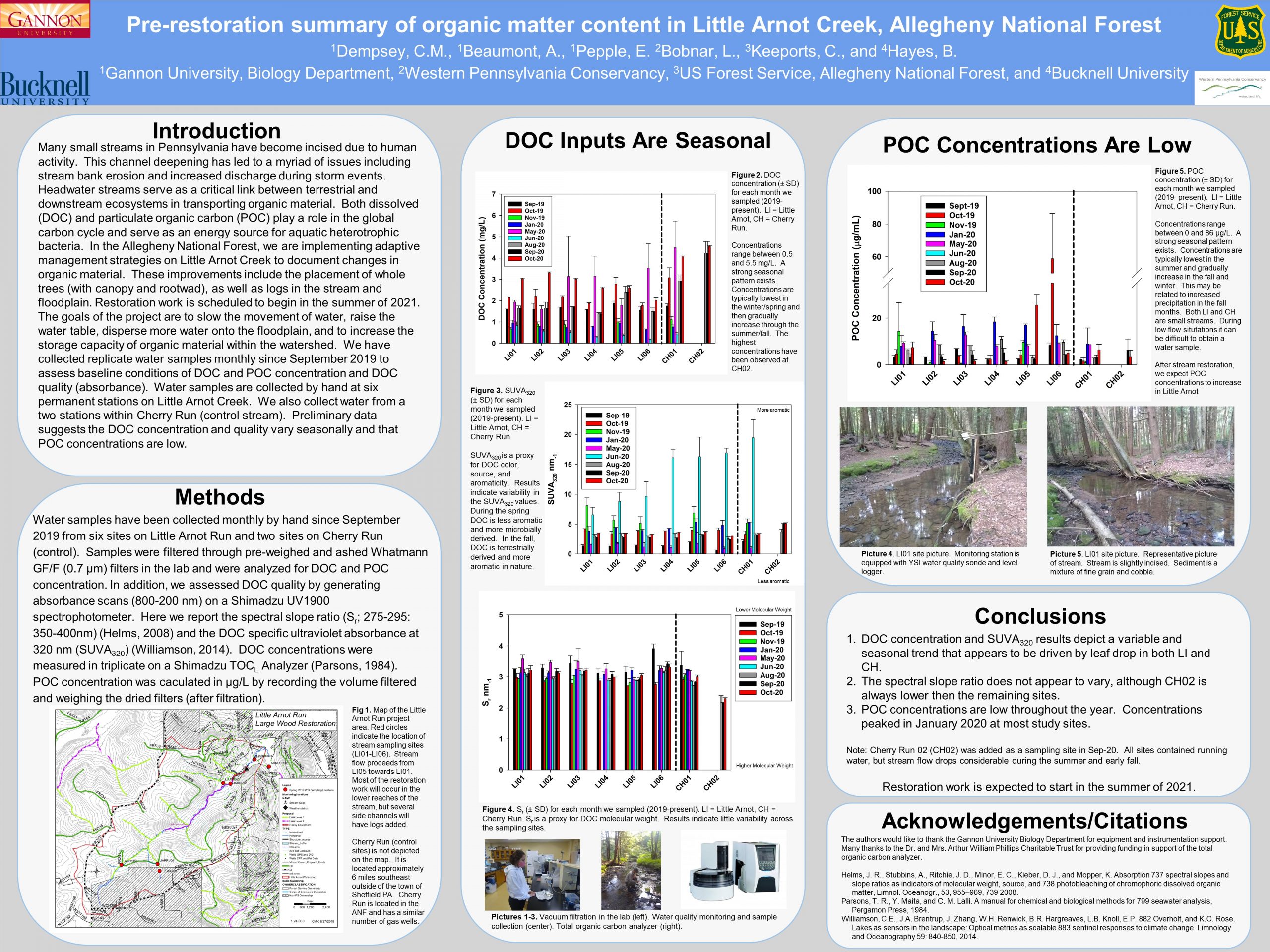Author:
Christopher Dempsey
Co-Authors:
Amelia Beaumont, Emily Pepple, Luke Bobnar, Chuck Keeports, Benjamin Hayes
Institution:
Gannon University
Abstract
Many small streams in Pennsylvania have become incised due to human activity. This channel deepening has led to a myriad of issues including stream bank erosion and increased discharge during storm events. Headwater streams serve as a critical link between terrestrial and downstream ecosystems in transporting organic material. Both dissolved (DOC) and particulate organic carbon (POC) play a role in the global carbon cycle and serve as an energy source for aquatic heterotrophic bacteria. In the Allegheny National Forest, we are implementing adaptive management strategies on Little Arnot Creek to document changes in organic material. These improvements include the placement of whole trees (with canopy and rootwad), as well as logs in the stream and floodplain. Restoration work is scheduled to begin in the summer of 2021. The goals of the project are to slow the movement of water, raise the water table, disperse more water onto the floodplain, and to increase the storage capacity of organic material within the watershed. We have collected replicate water samples monthly since September 2019 to assess baseline conditions of DOC and POC concentration and DOC quality (absorbance and fluorescence). Water samples are collected by hand at six permanent stations on Little Arnot Creek. We also collect water from a two stations within Cherry Run (control stream). Preliminary data suggests the DOC concentration and quality vary seasonally and that POC concentrations are low.
